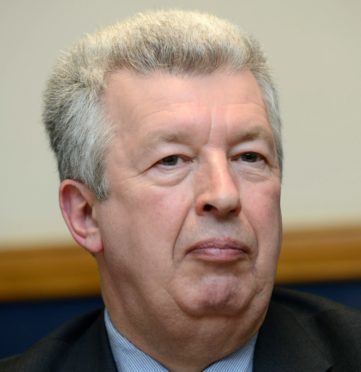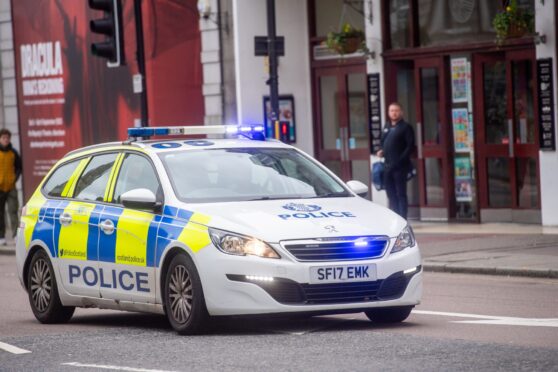This week’s controversy about Aberdeen’s suspended Labour councillors might seem to be an obscure issue about Labour Party rules, of interest only to party insiders and political anoraks.
It certainly defies easy explanation. Scottish Labour has no policy position against Labour councillors doing deals with any other parties, yet leaks from inside the party’s ruling executive committee claim the councillors in Aberdeen have been suspended for doing a deal with the Tories.
Deals with other parties are allowed by Labour Party rules, and they are bound to happen because of the local council voting system. No single party has a majority on any of Scotland’s councils.
There were plenty of deals between all sorts of different parties between 2012 and 2017, and even now there are coalition deals between Labour and the SNP in places like Edinburgh and Fife.
So, if it’s not about that, what’s it all about? Not the programme of the city’s ruling coalition, surely, given that Aberdeen City Council policies like building new council houses and running a council bus company are straight out of Labour’s manifesto.
Workers and unions have a voice on the council’s new staff governance committee, and the Labour/Tory coalition has made a firm commitment that there will be no compulsory redundancies.
Surely Labour’s ruling executive cannot insist that Labour councillors should do a deal with the SNP? None of the parties won even a third of the council election votes last year, so none has a better claim to power than any other, and the present coalition has a majority of council seats.
Not only that, but many people in Aberdeen have painful memories of the last time the SNP were in charge of the Town House, with the Accounts Commission called in to save the city from bankruptcy, at the cost of millions of pounds in cuts, and the closure of schools like St Machar Primary, Causewayend and Victoria Road.
If it’s not that either, then what can it be?
Try as I might to find an alternative explanation, the only reason I can find for why the Aberdeen Nine are facing expulsion from the Labour Party is that they wouldn’t do what they were told.
Every party has its own internal rules, and parties are entitled to expect their members to support party policy and to abide by decisions which are fair and reasonable, and properly explained.
Decisions which are unfair, unreasonable or impossible to understand are a different matter. Telling people to obey rules without explanation is neither democratic nor in line with Labour’s values.
Nor is it acceptable in this era of devolution for a Scottish committee in Glasgow to tell councillors in Aberdeen what deals they should do or who they should talk to.
Local decisions should surely be made by local people, not laid down from on high.
That is why I support the Aberdeen Nine and I hope Labour’s national executive committee will end their suspensions without further delay.
Time to deliver on railway connection
This week, Aberdeen International Airport revealed stage two of its multimillion-pound terminal expansion.
The security search area has doubled in size. Whisky lovers setting out on holiday might find it hard to drag themselves away from the new Duty Free.
Meanwhile, Aberdeen South Harbour is set to double the port’s capacity, bringing thousands of cruise liner passengers to the north-east, and the Aberdeen Western Peripheral Route should finally be open to traffic some time this year.
So, with Aberdeen set to become the first Scottish city with gigabit-speed fibre broadband available to every home and business, the north-east should be one of the best-connected regions in the 2020s.
But the railways are a different matter. Work is under way to upgrade the line west of the city, with a new station at Kintore and new commuter services to follow.
But plans for sorting out the one section of single track between Aberdeen and London, at Montrose, seem to have hit the buffers.
After promising to sort it out, the Scottish Government has gone all quiet.
Double-tracking at Montrose will not be cheap, but it will be a permanent solution. It’s time to deliver a public railway, fit for the future.
At the edge of the world?
I recently came across a book from Osprey Publishing, called Mons Graupius AD 83: Rome’s battle at the edge of the world.
Osprey’s books focus on military history, looking at battles and campaigns from ancient times to the 21st century.
The battle in this case was the first recorded event in what is now Scotland; the Roman defeat of the Caledonians somewhere north of the Tay.
Mons Graupius was what the Romans called the hill overlooking the battlefield: the nearest modern translation would be Mount Grampian, but nobody knows for sure where it was.
The book’s author Duncan B Campbell suggests a location between the Gadie Burn and Bennachie, an obvious gathering point for the Caledonian clans, overlooking what was once a large Roman army camp at Logie Durno.
Nobody yet has found decisive evidence, such as Roman weapons or bits of chariot, but the Battle of Bennachie has a certain ring to it – and it would surely put paid to any plans to build a new road across the northern slopes of the hill.
After all, for local folk, Bennachie is not so much at the edge of the world as the heart of it.










